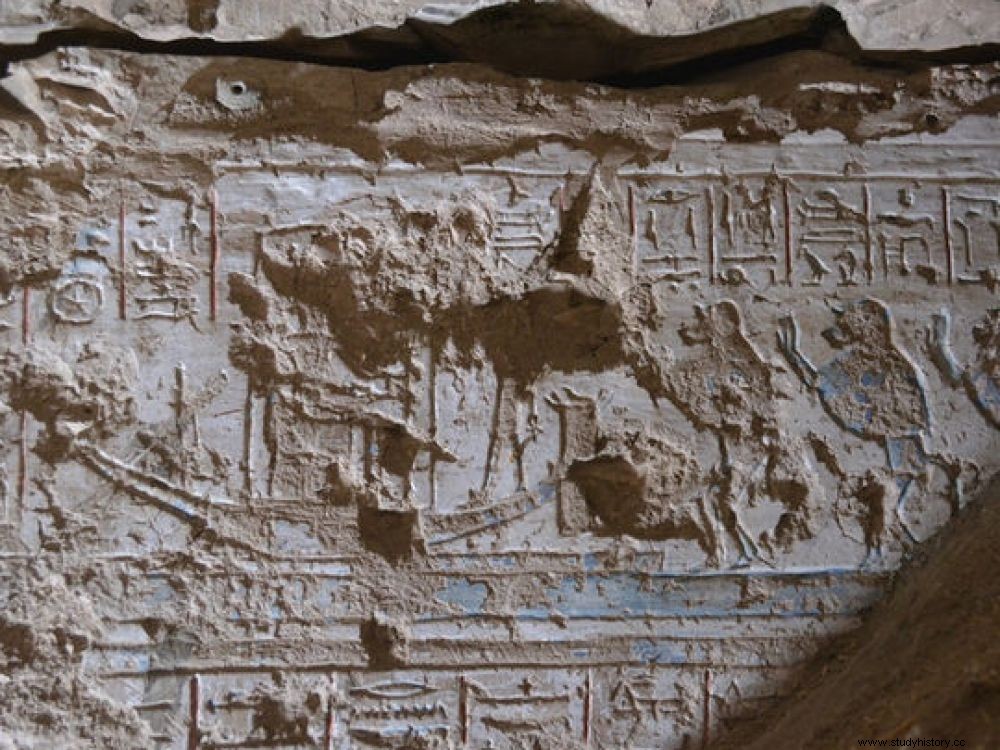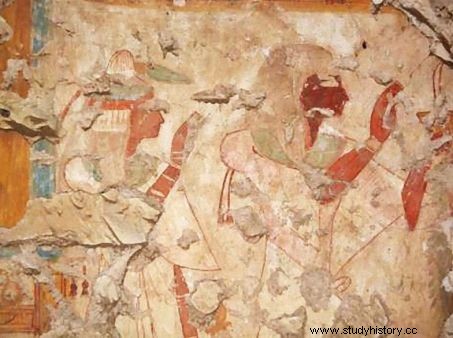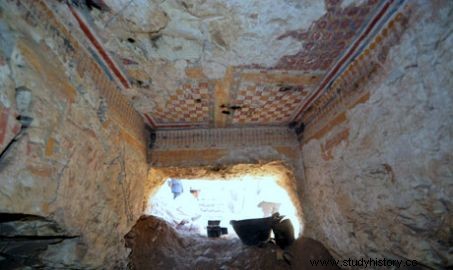An unknown tomb located in the area of El Khokha, on the west bank of the Nile in Luxor (Egypt) has just been unearthed by archaeologists.

On one of the walls of the entrance to the 3200-year-old tomb, the representation of a solar boat and four baboons praising the god Ra.
NECROPOLIS. It has been waiting for the visit of archaeologists for 3200 years! The tomb of a senior official of pharaonic Egypt has just been unearthed by a Japanese team in the necropolis of Thebes, near Luxor in Egypt. While working on the forecourt of another burial, Jiro Kondo, of Waseda University, in charge of the excavations, was surprised to discover a hole leading directly to this eternal residence of a man named Chonsou (or Khonsu*) , bearer of the title of royal scribe. Frescoes still adorned many walls of the hypogeum. On the north wall, it is thus possible to see the engraving of the solar boat of the god Ra, with four baboons in a praying position, arms raised. "On the eastern part, Chonsu and his consort are shown worshiping the gods Osiris and Isis. In the background, a representation of two ram-headed deities, probably Khnum “says the press release from Waseda University (Japan). Most of the paintings located on the west facade are currently not visible, due to their obstruction by blocks of stone.

Royal scribe Chonsu and his wife. ©Courtesy Waseda University
“In the New Kingdom (1550-1070), royal scribes were important figures “, explains the Egyptologist Pascal Vernus, director of study emeritus at the Ecole Pratique des Hautes Etudes (Paris), joined by Sciences et Avenir. Directly at the service of the pharaoh, they were not only his private secretaries, but even more, trusted men on whom the monarch relied to carry out his major projects. "Like Amenhotep, son of Hapu, who as royal scribe of the sovereign Amenhotep III supervised the construction of the temple of Luxor and the mortuary temple of the pharaoh and his colossi of Memnon », Specifies the Egyptologist. (read Science and the Future n°817).

Entrance to the tomb of Chonsu, discovered in the Theban necropolis, near Luxor. ©Courtesy Waseda University
“This tomb probably dates back to the Ramesside period (1292-1069 BCE )," Mahmoud Afifi, head of the Egyptian Antiquities Department, told al-Arham daily. Jiro Kondo and his colleagues hope to find more wall ornaments as soon as they are able to penetrate further inside the vault. In one of the available photographs, Egyptologist Pascal Vernus was able to read some of the hieroglyphics associated with Chonsou's name, and thus the beginning of his autobiography:"I was a precise and just scribe ! A little boast that he did not suspect would be revealed 3000 years later!
* Khonsu, Greek transcription, from the Egyptian name Chonsu
